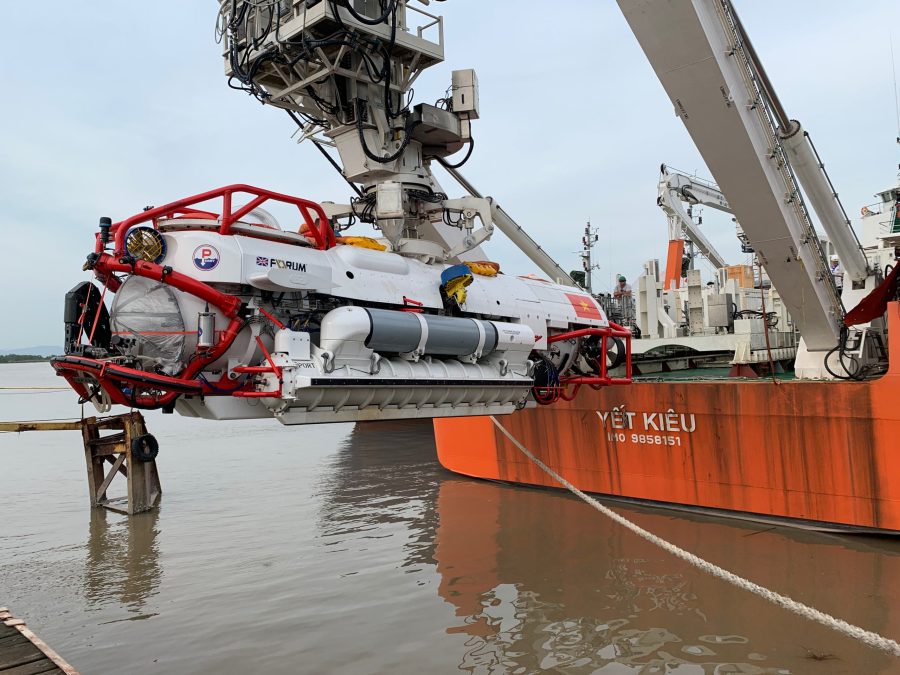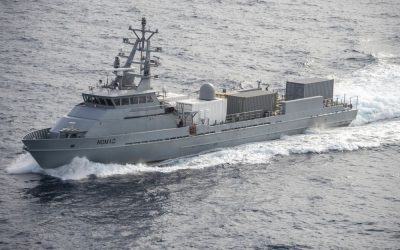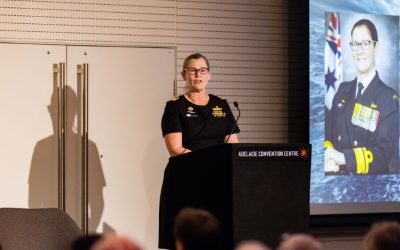Following successful sea trials, the Vietnam People’s Navy is now the owner of an innovative submarine rescue vehicle developed by Forum Energy Technologies
Submarines are a vital component of modern naval warfare, capable of covert and independent underwater operations for extended periods. However, when things go wrong, it’s crucial that submarine personnel are able to evacuate these vessels in a prompt and safe fashion.
As such, there is growing global demand for reliable subsea rescue provisions, which has inspired the development of Forum Energy Technologies’ (FET’s) LR11 submarine rescue vehicle (SRV). Classified by Lloyd’s Register, the LR11 was developed and built with input from two FET brands, Perry Slingsby Systems and Sub-Atlantic, which share nearly 100 years of subsea engineering experience between them.
Featuring a length of 9.8m, a breadth of 3.2m and a height of 3.4m (including its rescue skirt), the LR11 can travel at a speed close to 4knots and in water depths descending to 600m. FET tells Ship & Boat International: “This depth is not a limitation of the SRV, but a constraint of the distressed submarines: our existing ROVs can typically reach 4,000m and deeper.” The vehicle’s hull is made from Q1N submarine-standard steel, while most other components are fashioned from either marine-grade aluminium or stainless steel.

The LR11 is designed to evacuate submarine personnel at depths descending to 600m
Vietnam trial
The LR11 incorporates rechargeable energy storage systems (RESS) technology, comprising six lithium-ion battery packs stored on each side of the vehicle in cylindrical pods. The 12 batteries provide redundancy to the SRV’s propulsion and life support systems. The submersible also utilises the latest technologies incorporating CANBUS networking, as well as the high voltage interlock loop (HVIL) safety feature, designed to protect crew members or rescuers who come into contact with the vehicle’s high-voltage components. The RESS additionally powers the vehicle’s 20kW electric thrusters, which grant the vehicle forward, reverse and differential thrust.
The LR11 was designed, built and tested at FET’s Kirkbymoorside facility in North Yorkshire, UK, which features a 600m3 test pool and a hyperbaric chamber. Sea trials were then hosted in co-operation with end user customer the Vietnam People’s Navy, which, alongside Lloyd’s Register, offered third-party verification and supervision over the course of two months. FET recalls: “Nine of FET’s experts partook in the trial period, which was key for ensuring that the SRV could perform the rescue activities of a distressed sub [DISSUB] and the extraction of potentially injured personnel.”
When issues do occur, the submarine operator will issue a ‘SUBSUNK’ alert and initiate the NATO Submarine Rescue System (NSRS) call-out procedure, which was developed by FET. This will summon a mothership to the scene, carrying: the LR11 SRV; a survey ROV; a launch and recovery system (LARS); and a hyperbaric chamber facility.
Personnel provisions
Two senior pilots operate the SRV. One is situated in the vehicle’s command module, and pilots the submersible, while the other sits towards the rear of the same compartment, and is responsible for the majority of sensors, the life support system and movement of the ballast water as and when required.
The rescue chamber is another important section of the SRV, taking up the rear two-thirds of the vessel, and is manned by the rescue chamber operative (RCO), whose role is to operate the rescue hatch and assist with the safe transfer of up to 17 rescuees. The RCO is also responsible for caring for rescuees, who may be suffering from physical injuries and/or mental distress.
Once the DISSUB has been located, work can begin on the operation itself, including cutting any potential obstructions and navigating to ensure that the transfer skirt is above the respective rescue hatch. Water is then pumped by the ballast pumps until a ‘hard seal’ is achieved and a transfer of personnel can take place. The LR11 is able to attach itself to DISSUBs at angles in excess of 40°.
FET says: “Prior to entry, vital communication is undertaken to identify any potential risks, including toxic gases or the potential for pressure differential. The hatches are then opened and the submariners can be taken on board the SRV.” The LR11 is designed for a standard mission profile of up to 12 hours; this includes oxygen, CO2 absorbent and food and water for up to 20 people. It has also taken into account Lloyd’s Register’s requirement for an emergency scenario (for example, should the SRV itself become disabled) for an additional 96 hours of autonomy for up to 20 people. The SRV is fitted with three cameras, a Kongsberg sonar and an iXblue Octans fibre-optic gyrocompass.
TECHNICAL PARTICULARS
LR11 SRV
Length: 9.8m
Breadth: 3.2m
Depth: 3.4m
Displacement: 28tonnes
Cruising speed: 2knots
Max speed: >4knots
Bollard pull: 1tonne
Crew: 3
Survivors: >17
Classification society: Lloyd’s Register






